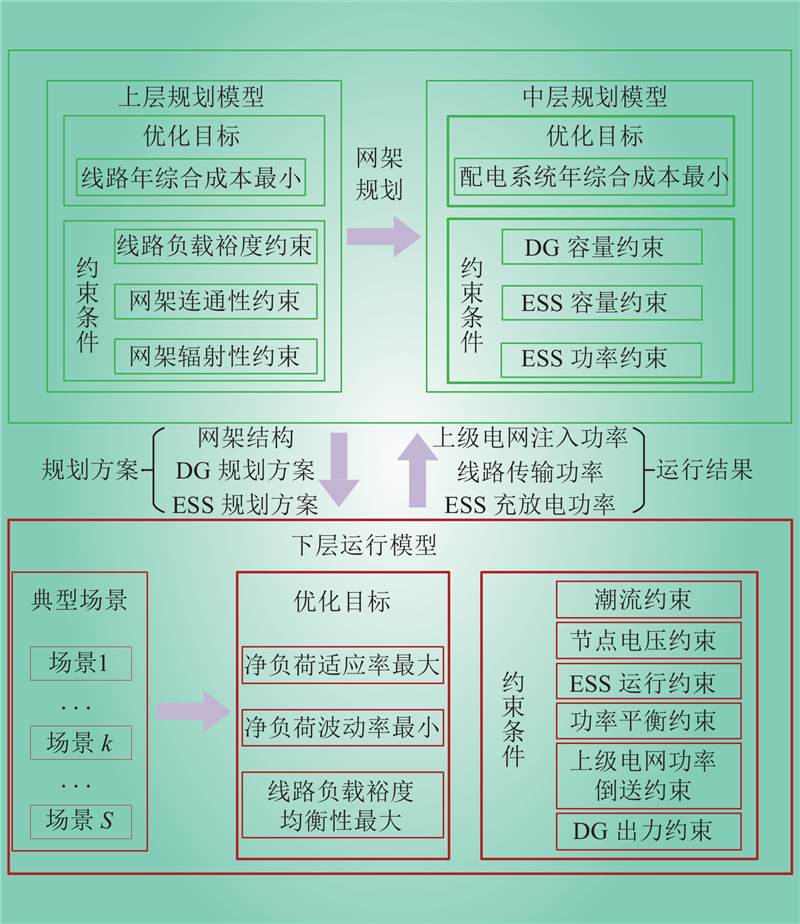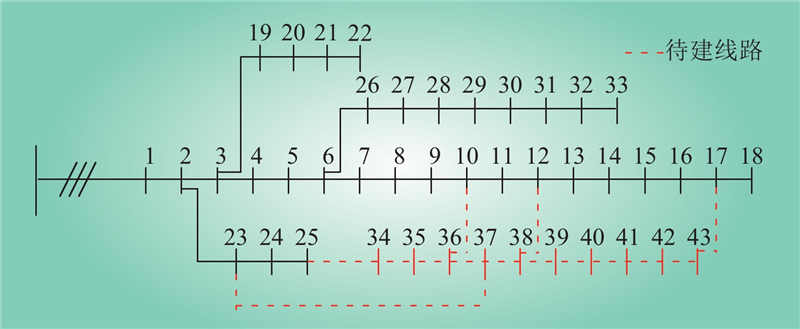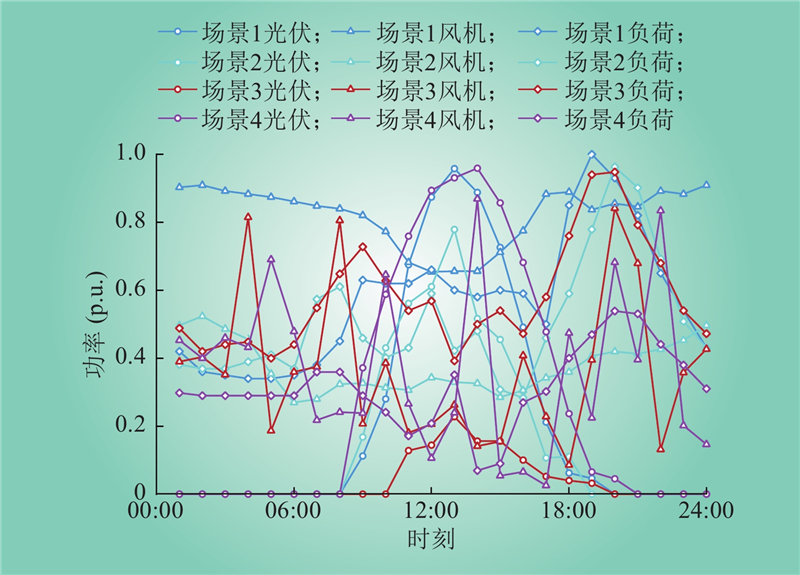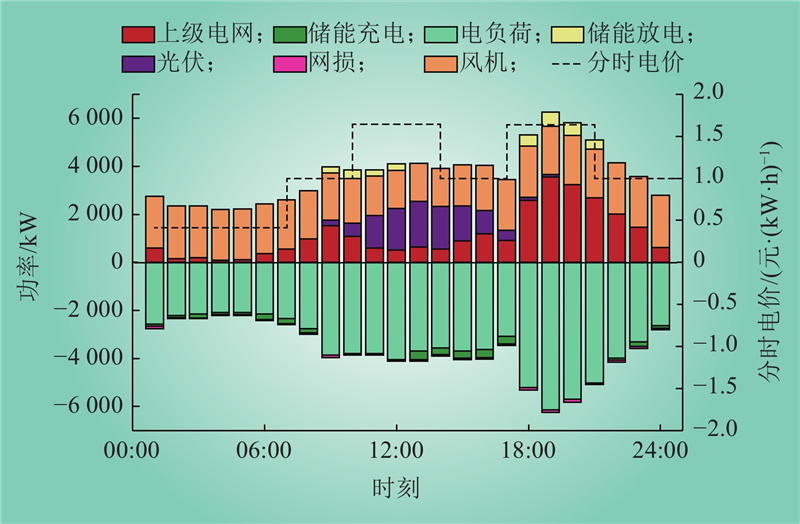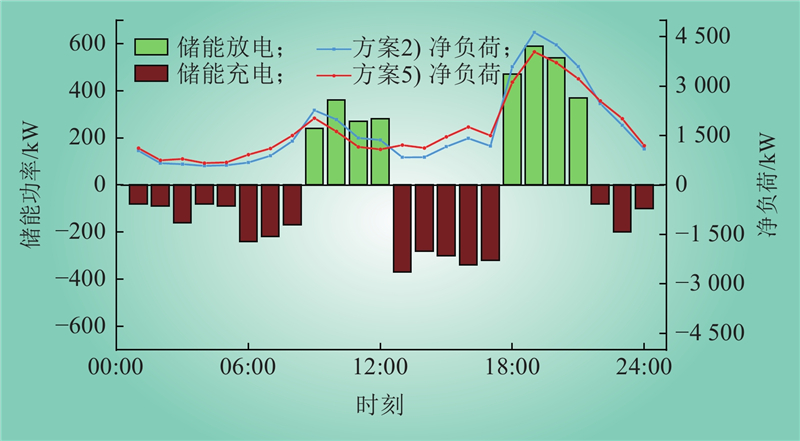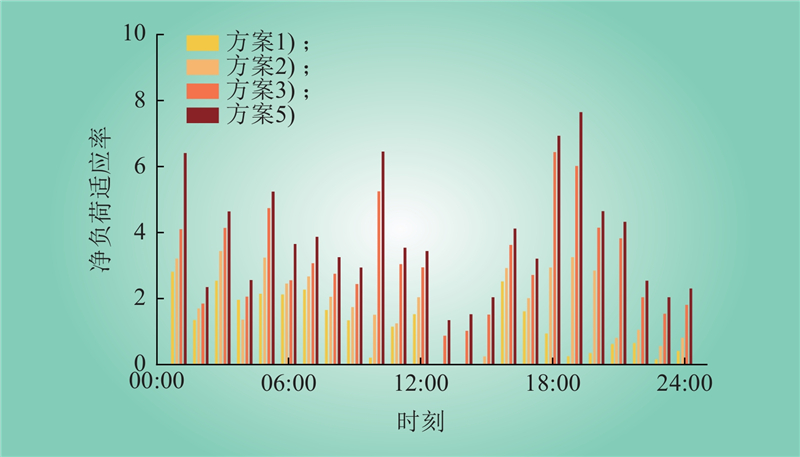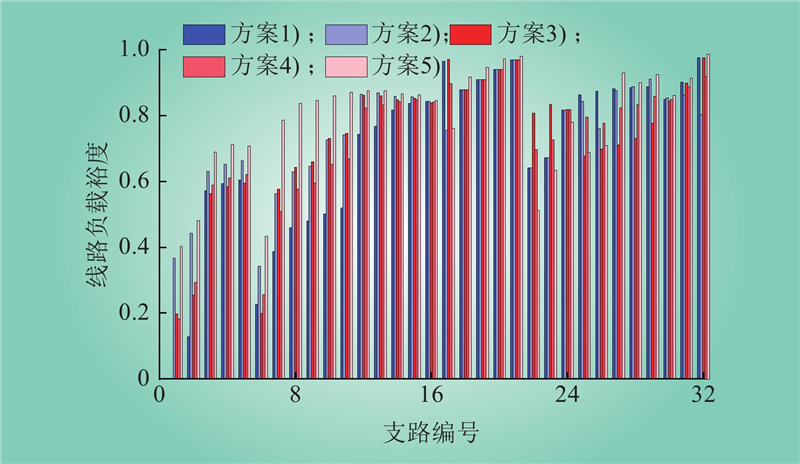| 1 |
马钊, 张恒旭, 赵浩然, 等. 双碳目标下配用电系统的新使命和新挑战[J]. 中国电机工程学报, 2022, 42 (19): 6931- 6945.
|
|
MA Zhao, ZHANG Hengxu, ZHAO Haoran, et al. New mission and challenge of power distribution and consumption system under dual-carbon target[J]. Proceedings of the CSEE, 2022, 42 (19): 6931- 6945.
|
| 2 |
米伟铭, 叶鹏, 张明理, 等. 基于云模型的新型配电系统灵活性评估方法[J/OL]. 电网技术, 1–9[2024-05-29]. https://doi.org/10.13335/j.1000-3673.pst.2023.0793.
|
|
MI Weiming, YE Peng, ZHANG Mingli, et al. A new flexibility evaluation method for distribution systems based on cloud models[J/OL]. Power System Technology: 1–9[2024-05-29]. https://doi.org/10.13335/j.1000-3673.pst.2023.0793.
|
| 3 |
LU Z X, LI H B, QIAO Y. Probabilistic flexibility evaluation for power system planning considering its association with renewable power curtailment[J]. IEEE Transactions on Power Systems, 2018, 33 (3): 3285- 3295.
DOI
|
| 4 |
HEYDARIAN-FORUSHANI E, GOLSHAN M E H, SHAFIE-KHAH M, et al. Optimal operation of emerging flexible resources considering sub-hourly flexible ramp product[J]. IEEE Transactions on Sustainable Energy, 2018, 9 (2): 916- 929.
DOI
|
| 5 |
ANWAR M B, QAZI H W, BURKE D J, et al. Harnessing the flexibility of demand-side resources[J]. IEEE Transactions on Smart Grid, 2019, 10 (4): 4151- 4163.
DOI
|
| 6 |
JI H R, WANG C S, LI P, et al. Quantified analysis method for operational flexibility of active distribution networks with high penetration of distributed generators[J]. Applied Energy, 2019, 239, 706- 714.
DOI
|
| 7 |
何叶, 杨晓东, 吴红斌, 等. 面向新型配电系统灵活性提升的智能软开关与储能系统协调规划[J]. 电力系统自动化, 2023, 47 (18): 142- 150.
DOI
|
|
HE Ye, YANG Xiaodong, WU Hongbin, et al. Coordinated planning of soft open point and energy storage system for flexibility enhancement of new distribution system[J]. Automation of Electric Power Systems, 2023, 47 (18): 142- 150.
DOI
|
| 8 |
宁剑, 江长明, 张哲, 等. 可调节负荷资源参与电网调控的思考与技术实践[J]. 电力系统自动化, 2020, 44 (17): 1- 8.
DOI
|
|
NING Jian, JIANG Changming, ZHANG Zhe, et al. Thinking and technical practice of adjustable load resources participating in dispatching and control of power grid[J]. Automation of Electric Power Systems, 2020, 44 (17): 1- 8.
DOI
|
| 9 |
张沈习, 王浩宇, 李然, 等. 考虑智能软开关接入的主动配电网扩展规划方法[J]. 中国电机工程学报, 2023, 43 (1): 48- 61.
|
|
ZHANG Shenxi, WANG Haoyu, LI Ran, et al. Active distribution network expansion planning method considering the integration of soft open point[J]. Proceedings of the CSEE, 2023, 43 (1): 48- 61.
|
| 10 |
赵海洲, 陈建凯, 杨海跃, 等. 考虑传输能力的含分布式电源配电网扩展规划方法[J]. 电力自动化设备, 2021, 41 (12): 70- 77.
|
|
ZHAO Haizhou, CHEN Jiankai, YANG Haiyue, et al. Expansion planning method of distribution network with distributed generation considering transmission capacity[J]. Electric Power Automation Equipment, 2021, 41 (12): 70- 77.
|
| 11 |
沈依婷, 张菁, 武鹏, 等. 含电动汽车的配电网双重不确定性网架规划方法[J]. 中国电力, 2020, 53 (4): 139- 146.
|
|
SHEN Yiting, ZHANG Jing, WU Peng, et al. Bi-uncertainty network frame planning method for distribution network with electric vehicles[J]. Electric Power, 2020, 53 (4): 139- 146.
|
| 12 |
孔祥玉, 尧静涛, 崔凯, 等. 考虑分布式电源接入的区域配电网规划投资决策方法[J]. 中国电力, 2020, 53 (4): 41- 48.
|
|
KONG Xiangyu, YAO Jingtao, CUI Kai, et al. Investment decision-making method for regional distribution network planning considering distributed generations[J]. Electric Power, 2020, 53 (4): 41- 48.
|
| 13 |
石博, 肖传亮, 彭克, 等. 基于集群划分的配电网网-源-储双层联合扩展规划策略[J]. 电力系统自动化, 2023, 47 (14): 43- 51.
DOI
|
|
SHI Bo, XIAO Chuanliang, PENG Ke, et al. Two-layer joint expansion planning strategy of grid-source-storage for distribution network based on cluster partition[J]. Automation of Electric Power Systems, 2023, 47 (14): 43- 51.
DOI
|
| 14 |
杨修宇, 穆钢, 柴国峰, 等. 考虑灵活性供需平衡的源-储-网一体化规划方法[J]. 电网技术, 2020, 44 (9): 3238- 3246.
|
|
YANG Xiuyu, MU Gang, CHAI Guofeng, et al. Source-storage-grid integrated planning considering flexible supply-demand balance[J]. Power System Technology, 2020, 44 (9): 3238- 3246.
|
| 15 |
张海波, 胡玉康, 李正荣, 等. 负荷高密度地区中计及灵活性不足风险的储能优化配置[J]. 电网技术, 2023, 47 (12): 4926- 4940.
|
|
ZHANG Haibo, HU Yukang, LI Zhengrong, et al. Optimal configuration of energy storage considering the risk of insufficient flexibility in high load density areas[J]. Power System Technology, 2023, 47 (12): 4926- 4940.
|
| 16 |
孟秋, 廖凯, 郑舜玮, 等. 考虑灵活性区域互济的电力系统源-网-储协同规划[J/OL]. 电网技术, 1–13[2024-05-29]. https://doi.org/10.13335/j.1000-3673.pst.2023.2241.
|
|
MENG Qiu, LIAO Kai, ZHENG Shunwei, et al. Source-grid-storage coordinated planning for power system considering flexibility mutual aid among regions[J/OL]. Power System Technology, 1–13[2024-05-29]. https://doi.org/10.13335/j.1000-3673.pst.2023.2241.
|
| 17 |
刘帅, 李华强, 武姝凝, 等. 考虑灵活性资源传输精细化建模的配电网优化运行[J/OL]. 电网技术: 1–15[2024-05-29]. https://doi.org/10.13335/j.1000-3673.pst.2023.0398.
|
|
LIU Shuai, LI Huaqiang, WU Shuning, et al. Optimizing the operation of distribution network by considering the refined modeling of flexible resource transmission[J/OL]. Power System Technology: 1–15[2024-05-29]. https://doi.org/10.13335/j.1000-3673.pst.2023.0398.
|
| 18 |
马英浩, 刘琛, 谢开贵, 等. 电力系统网络传输灵活性及其评价综述[J]. 中国电机工程学报, 2023, 43 (14): 5429- 5441.
|
|
MA Yinghao, LIU Chen, XIE Kaigui, et al. Review on network transmission flexibility of power system and its evaluation[J]. Proceedings of the CSEE, 2023, 43 (14): 5429- 5441.
|
| 19 |
马望, 高红均, 李海波, 等. 考虑智能软开关的配电网灵活性评估及优化调度模型[J]. 电网技术, 2019, 43 (11): 3935- 3943.
|
|
MA Wang, GAO Hongjun, LI Haibo, et al. Flexibility evaluation and optimal dispatch model of distribution network considering soft open point[J]. Power System Technology, 2019, 43 (11): 3935- 3943.
|
| 20 |
JI H R, WANG C S, LI P, et al. Quantified flexibility evaluation of soft open points to improve distributed generator penetration in active distribution networks based on difference-of-convex programming[J]. Applied Energy, 2018, 218, 338- 348.
DOI
|
| 21 |
王洪坤, 王守相, 潘志新, 等. 含高渗透分布式电源配电网灵活性提升优化调度方法[J]. 电力系统自动化, 2018, 42 (15): 86- 93.
DOI
|
|
WANG Hongkun, WANG Shouxiang, PAN Zhixin, et al. Optimized dispatching method for flexibility improvement of distribution network with high-penetration distributed generation[J]. Automation of Electric Power Systems, 2018, 42 (15): 86- 93.
DOI
|
| 22 |
孙惠娟, 刘君, 彭春华. 基于分类概率综合多场景分析的分布式电源多目标规划[J]. 电力自动化设备, 2018, 38 (12): 39- 45.
|
|
SUN Huijuan, LIU Jun, PENG Chunhua. Multi-objective DG planning based on classified probability integration multi-scenario analysis[J]. Electric Power Automation Equipment, 2018, 38 (12): 39- 45.
|
| 23 |
WU C H, OUYANG C S, CHEN L W, et al. A new fuzzy clustering validity index with a Median factor for centroid-based clustering[J]. IEEE Transactions on Fuzzy Systems, 2015, 23 (3): 701- 718.
DOI
|
| 24 |
陈柯蒙, 肖曦, 田培根, 等. 一种建筑集成光储系统规划运行综合优化方法[J]. 中国电机工程学报, 2023, 43 (13): 5001- 5012.
|
|
CHEN Kemeng, XIAO Xi, TIAN Peigen, et al. A comprehensive optimization method for planning and operation of building integrated photovoltaic energy storage system[J]. Proceedings of the CSEE, 2023, 43 (13): 5001- 5012.
|
| 25 |
陈红坤, 夏方舟, 袁栋, 等. 直流配电网中含光伏的电动汽车快速充电站优化配置方案[J]. 电力系统自动化, 2020, 44 (16): 53- 60.
DOI
|
|
CHEN Hongkun, XIA Fangzhou, YUAN Dong, et al. Optimal configuration scheme of fast electric vehicle charging station with photovoltaic in DC distribution network[J]. Automation of Electric Power Systems, 2020, 44 (16): 53- 60.
DOI
|
| 26 |
谭碧飞, 陈皓勇, 梁子鹏, 等. 基于协同NSGA-Ⅱ的微电网随机多目标经济调度[J]. 高电压技术, 2019, 45 (10): 3130- 3139.
|
|
TAN Bifei, CHEN Haoyong, LIANG Zipeng, et al. Stochastic multi-objective economic dispatch of micro-grid based on CoNSGA-Ⅱ[J]. High Voltage Engineering, 2019, 45 (10): 3130- 3139.
|
| 27 |
BARAN M E, WU F F. Network reconfiguration in distribution systems for loss reduction and load balancing[J]. IEEE Transactions on Power Delivery, 1989, 4 (2): 1401- 1407.
DOI
|



